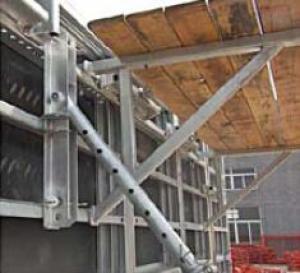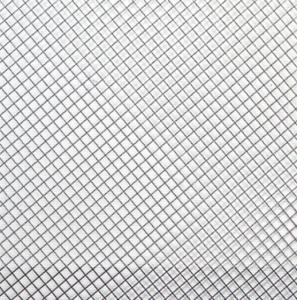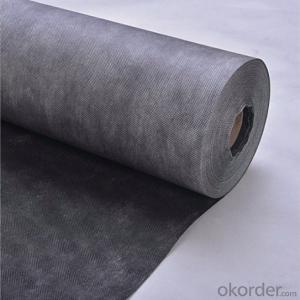Steel-Frame Working Platformfor Formwork and Scaffolding systems
- Loading Port:
- Tianjin
- Payment Terms:
- TT OR LC
- Min Order Qty:
- 50 m²
- Supply Capability:
- 1000 m²/month
OKorder Service Pledge
OKorder Financial Service
You Might Also Like
Steel-frame Formwork SF-140
Characteristics:
◆ Few parts for fast forming.
◆ Max. Concrete pressure: 80KN/m2.
◆ Hot-dip galvanized steel frame.
◆ The thickness of plywood is 18mm & the panel is 14cm.
◆ Compatibility with Hunnebeck Manto system due to similar edge profile.
System Details & Application:
◆ Neat joint and fast assembling with aligning panel clamp.
◆ Flexible panel arrangement and height extension.
◆ The selection of panels.
◆ Kinds of panel connectors.
◆ Corner clamp application.
◆ Length adjustment application.
◆ Height adjustment & aligning strut.
◆ Walkway bracket & platform.
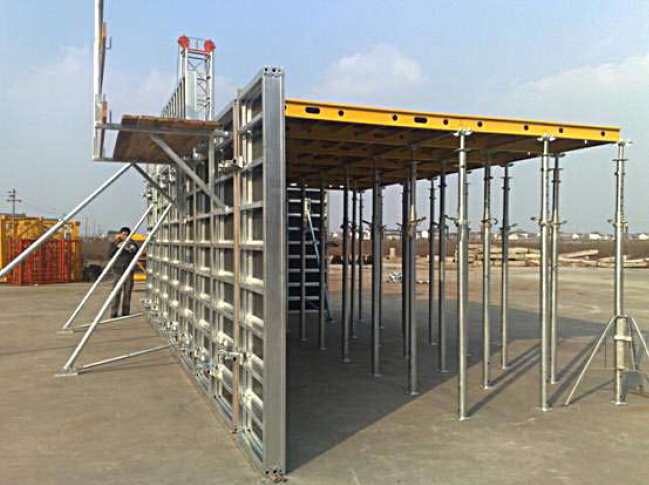
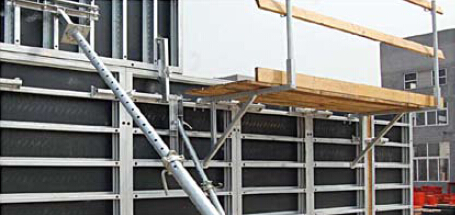
- Q:How does steel formwork prevent concrete leakage?
- Steel formwork prevents concrete leakage by providing a strong and rigid structure that holds the concrete in place during the pouring and curing process. The steel panels are tightly connected and sealed to prevent any gaps or openings through which the concrete could escape. The formwork panels are designed and assembled in a way that ensures a watertight construction. The joints between the panels are securely fastened and sealed with rubber gaskets or other waterproofing materials. This prevents any seepage or leakage of the concrete mixture. Additionally, steel formwork is typically reinforced with braces and other support systems to maintain its structural integrity and prevent any movement or shifting during the pouring process. This stability ensures that the concrete remains contained within the formwork and doesn't escape through any weak points. Furthermore, the smooth surface of steel formwork prevents the concrete from adhering to it. This allows for easy removal of the formwork after the concrete has cured, without any concrete residue remaining or damaging the structure. Overall, steel formwork provides a reliable and durable solution for preventing concrete leakage. Its strong construction, tight joints, and smooth surface ensure that the concrete remains contained within the formwork, resulting in a high-quality and leak-free concrete structure.
- Q:How does steel formwork compare to aluminum formwork in terms of performance?
- Steel and aluminum formwork are commonly used materials in the construction industry to create temporary molds or structures that hold concrete in place until it becomes solid. When comparing these materials, it is important to consider their performance aspects. In terms of performance, steel formwork is known for its strength and durability. It can withstand heavy loads and rough handling, making it suitable for heavy-duty applications. Steel formwork also maintains its shape during the concrete pouring process, resulting in accurate finishes. It can be easily customized to meet project requirements. On the other hand, aluminum formwork is preferred for its lightweight nature. It is easy to handle, transport, and assemble, reducing labor costs and construction time. It also has excellent corrosion resistance, making it suitable for coastal areas or humid environments. Additionally, aluminum formwork provides a smooth surface finish on the concrete, requiring minimal treatment. The choice between steel and aluminum formwork depends on the specific project requirements. Steel formwork is ideal for projects with heavy loads or high reuse needs due to its strength and durability. On the other hand, aluminum formwork is a better choice for projects that require quick assembly, easy handling, and a smooth surface finish. Ultimately, the selection of formwork should be based on a careful evaluation of the project's needs, budget, timeline, and other factors such as cost, maintenance, and environmental impact.
- Q:How does steel formwork handle different concrete reinforcement spacing?
- Steel formwork is able to handle different concrete reinforcement spacing by providing flexibility and adaptability in its design. The formwork is typically adjustable, allowing for the necessary spacing between reinforcement bars to be accommodated. This ensures that the concrete is poured and compacted around the reinforcement bars evenly, maintaining structural integrity and strength. Additionally, steel formwork is durable and strong, capable of withstanding the pressures exerted by the concrete and the reinforcement bars, regardless of their spacing.
- Q:How does steel formwork contribute to the overall speed of construction?
- Steel formwork contributes to the overall speed of construction by providing a durable and reusable solution for creating concrete structures. The use of steel formwork allows for faster and more efficient construction processes as it can be easily assembled and disassembled, reducing the time required for formwork installation and removal. Additionally, steel formwork provides a smooth and consistent surface, resulting in faster curing times and improved productivity.
- Q:Can steel formwork be used for both large and small construction projects?
- Yes, steel formwork can be used for both large and small construction projects. Steel formwork is highly versatile and can be adjusted to fit various project sizes. It offers durability, strength, and stability, making it suitable for both small-scale and large-scale construction projects.
- Q:What are the typical deflection limits for steel formwork systems?
- The typical deflection limits for steel formwork systems can vary depending on several factors, including the specific design and application requirements of the project. However, there are some general guidelines that are commonly followed. In most cases, the deflection limits for steel formwork systems are typically determined based on the span length and the load applied to the formwork. As a general rule, the deflection limits for steel formwork systems are often limited to L/360 or L/240, where L represents the span length of the formwork. For example, if the span length of the formwork is 10 feet, the deflection limit would be L/360, which equals approximately 0.028 feet or 0.34 inches. This means that the maximum allowable deflection for this formwork system would be 0.34 inches, ensuring that the formwork remains stable and does not significantly deform under the applied load. It is important to note that these deflection limits may be adjusted based on the specific project requirements or industry standards. For instance, in certain high-rise construction projects, stricter deflection limits may be imposed to ensure the structural integrity and overall safety of the formwork system. Ultimately, the deflection limits for steel formwork systems must be carefully considered and evaluated during the design and construction process to ensure the formwork can effectively support the applied loads and maintain its stability throughout the construction process. Consulting with a structural engineer or referring to relevant industry standards can provide more specific and accurate deflection limits for a given steel formwork system.
- Q:Can steel formwork be used for both residential and institutional projects?
- Steel formwork is a construction material that can be used for both residential and institutional projects. It is known for its versatility and durability, which makes it suitable for a wide range of construction projects, including buildings for both residential and institutional purposes. The construction industry commonly uses steel formwork due to its strength, stability, and ability to be reused. By providing a strong and sturdy framework for pouring concrete, steel formwork helps in creating precise and well-structured structures. Its ability to withstand high pressures and loads makes it ideal for large-scale institutional projects like schools, hospitals, and government buildings. Similarly, steel formwork can also be applied in residential projects such as single-family homes, apartment complexes, and townhouses. Its versatility enables flexible and efficient construction methods, making it a popular choice for different types of projects.
- Q:How does steel formwork contribute to the speed of construction?
- Steel formwork contributes to the speed of construction in several ways. Firstly, steel is a highly durable and strong material, allowing for faster construction processes as it can withstand the pressure and weight of the concrete. This means that larger sections of formwork can be used, reducing the number of individual components and therefore speeding up the assembly process. Secondly, steel formwork is highly reusable. Unlike traditional timber formwork, steel formwork can be used for multiple construction projects, reducing the need for new materials and saving time and resources. This reusability also means that the formwork can be easily assembled and disassembled, allowing for faster turnaround times between projects. Additionally, steel formwork is highly adaptable and customizable. It can be easily adjusted to fit different shapes and sizes, allowing for versatile use in various construction projects. This flexibility eliminates the need for custom-made formwork, which can be time-consuming and costly. Furthermore, steel formwork is resistant to weather conditions, unlike timber formwork that can be affected by moisture and temperature changes. This resilience allows construction projects to progress even in adverse weather conditions, minimizing delays and maintaining construction speed. Lastly, steel formwork provides a smooth and even finish to the concrete structure. This eliminates the need for additional finishing work, such as plastering or sanding, which can be time-consuming and add to the overall construction timeline. In summary, steel formwork contributes to the speed of construction through its durability, reusability, adaptability, weather resistance, and ability to provide a smooth finish. These factors combine to reduce construction time, improve efficiency, and ultimately accelerate the overall construction process.
- Q:Are there any specific considerations for using steel formwork in areas with limited access?
- Yes, there are several specific considerations for using steel formwork in areas with limited access. Firstly, the transportation of steel formwork to such areas may be challenging due to restricted routes or narrow passages. Additionally, the assembly and disassembly of steel formwork may require more time and effort in confined spaces, making it necessary to carefully plan and coordinate the logistics. Moreover, the weight of steel formwork can be a significant factor, as it may limit the use of certain lifting equipment or require additional manpower for handling. Lastly, the removal of steel formwork may also pose difficulties in limited access areas, necessitating careful planning to ensure a safe and efficient process.
- Q:How does steel formwork contribute to the overall aesthetics of the structure?
- There are several ways in which steel formwork enhances the overall aesthetics of a structure. Firstly, it is renowned for its high-quality finish and smooth surfaces, which create sleek and visually pleasing concrete structures. The clean and uniform appearance achieved with steel formwork adds to the aesthetic appeal of the final product. Furthermore, steel formwork allows for greater design flexibility and creativity. Architects and designers can take advantage of the versatility of steel to create intricate shapes and curves that would be challenging with other formwork materials. This flexibility opens up possibilities for unique and attention-grabbing architectural features, enhancing the overall visual appeal of the structure. In addition, steel formwork provides a consistent and precise formwork system, resulting in accurate dimensions and sharp edges. This attention to detail contributes to the overall crispness and professionalism of the structure's aesthetics. Whether it's for exposed concrete walls, columns, or beams, steel formwork ensures a high level of precision and alignment, creating a polished and refined appearance. Moreover, steel formwork offers durability and longevity, making it an ideal choice for structures that require long-term aesthetics. Unlike other formwork materials that may deteriorate over time, steel is resistant to weathering, corrosion, and warping. This ensures that the structure maintains its aesthetic appeal for years to come, without compromising its structural integrity. Lastly, steel formwork promotes sustainability by being easily reusable, reducing waste. Construction companies can minimize their environmental footprint by using the same steel formwork for multiple projects. This emphasis on sustainability aligns with the modern design aesthetic that values eco-friendly practices, making steel formwork an attractive choice for architects and clients alike. To sum up, steel formwork contributes to the overall aesthetics of a structure through its high-quality finish, design flexibility, precise formwork system, durability, and sustainability. These factors combine to create visually appealing, sleek, and polished structures that stand out in their architectural beauty.
1. Manufacturer Overview |
|
|---|---|
| Location | |
| Year Established | |
| Annual Output Value | |
| Main Markets | |
| Company Certifications | |
2. Manufacturer Certificates |
|
|---|---|
| a) Certification Name | |
| Range | |
| Reference | |
| Validity Period | |
3. Manufacturer Capability |
|
|---|---|
| a)Trade Capacity | |
| Nearest Port | |
| Export Percentage | |
| No.of Employees in Trade Department | |
| Language Spoken: | |
| b)Factory Information | |
| Factory Size: | |
| No. of Production Lines | |
| Contract Manufacturing | |
| Product Price Range | |
Send your message to us
Steel-Frame Working Platformfor Formwork and Scaffolding systems
- Loading Port:
- Tianjin
- Payment Terms:
- TT OR LC
- Min Order Qty:
- 50 m²
- Supply Capability:
- 1000 m²/month
OKorder Service Pledge
OKorder Financial Service
Similar products
New products
Hot products
Hot Searches
Related keywords

